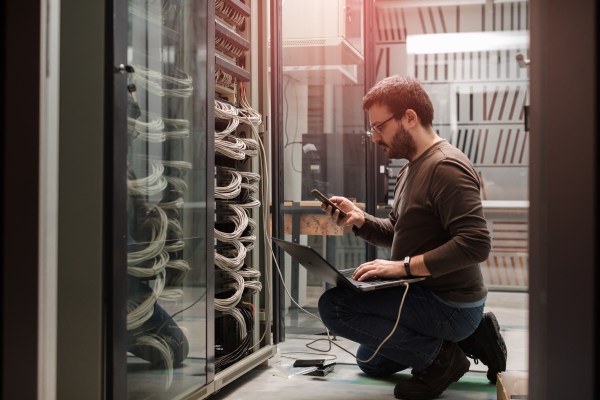The nature of data centers means that they depend on electricity to function. Minimizing the electricity they consume, can both lower running costs and increase sustainability. Deploying energy-saving hardware such as servers often plays a key role in maximizing energy efficiency. Here is a quick guide to what you need to know.
What is energy-saving hardware?
Energy-saving hardware refers to computing equipment designed to operate more efficiently, consuming less power while maintaining or enhancing performance. This includes servers, storage devices, and networking equipment optimized for reduced energy consumption. Common features of energy-efficient hardware include:
Energy-efficient components: Use of energy-efficient components like solid-state drives (SSDs) instead of hard disk drives (HDDs), and energy-efficient Ethernet for networking, which consume less power and generate less heat.
Energy-efficient power supplies: Energy-saving hardware often includes power supplies with high efficiency ratings (such as 80 PLUS certification), which convert more of the input electrical power into usable output power and produce less waste heat. This reduces overall power consumption and improves the energy efficiency of the entire system.
Power management features: Integration of power management technologies such as power capping, power throttling, and advanced sleep modes that reduce power consumption when full performance is not needed, ensuring that energy is used efficiently based on real-time requirements.
Dynamic power scaling: Technologies such as dynamic voltage and frequency scaling (DVFS) allow hardware to adjust power usage based on current workload demands, reducing energy consumption during periods of low activity.
Advanced thermal management: Efficient thermal designs, including improved airflow, heat sinks, and liquid cooling systems, help maintain optimal temperatures with less energy spent on cooling, thereby reducing the overall power required for thermal management.
Cost savings with energy-efficient hardware
Deploying energy-efficient hardware obviously reduces the amount of energy needed to power that hardware and hence leads to cost savings. There are, however, many other ways that deploying energy-efficient hardware can help to reduce costs. Here are five of the main ones.
Reduced cooling requirements: Efficient hardware generates less heat, which lowers the load on cooling systems. Advanced thermal management features, such as improved airflow design and liquid cooling, mean data centers can maintain optimal temperatures with less energy-intensive cooling methods, reducing HVAC costs.
Decreased power conversion losses: High-efficiency power supplies (e.g., 80 PLUS certified) convert more of the input power into usable output, reducing energy waste and lowering overall power consumption. This efficiency minimizes the need for additional power, reducing utility expenses.
Optimized resource utilization: Energy-efficient hardware often supports virtualization and other resource optimization technologies, allowing more workloads to be handled by fewer physical servers. This consolidation reduces the number of servers needed, cutting down on both hardware costs and associated energy expenses.
Longer hardware lifespan: Lower operating temperatures and efficient power usage reduce wear and tear on hardware components, extending their lifespan. This means less frequent replacements and upgrades, lowering capital expenditure on new equipment.
Reduced maintenance costs: Energy-efficient hardware typically experiences fewer failures and requires less maintenance due to lower operating temperatures and optimized power usage. This results in decreased downtime and lower expenditures on repair and maintenance services, ultimately saving on operational costs.
Environmental benefits
The most obvious environmental benefit of energy-efficient hardware is that it lowers the demand for energy resources. Even when these come from renewable sources, there is still an environmental price attached to them. The environmental price of fossil fuels is even higher. There are, however, several corollary benefits. Here are three of the main ones.
Supports the transition from fossil fuels
Lowering energy demand through energy-efficient hardware creates opportunities for increased adoption of renewable energy sources such as solar, wind, and hydroelectric power. As the demand for traditional energy decreases, there is a greater incentive for investment in and expansion of renewable energy infrastructure.
Less need for cooling
Energy-efficient hardware generates less heat during operation. This means that less cooling is required. Not only does this reduce the data center’s energy consumption even further but it can also improve its sustainability in other ways.
For example, traditional cooling systems such as evaporative cooling towers, can consume significant amounts of water. By lowering cooling needs, energy-efficient hardware helps conserve water resources. Moreover, some cooling systems used refrigerants that had a serious, negative impact on the environment (and the air quality inside the data center).
Reduction of electronic waste
Energy-efficient hardware often has longer lifespans as the optimized power usage and lower operating temperatures reduce the wear and tear on components. This results in fewer hardware replacements and less electronic waste generated over time. Additionally, the longer lifespan reduces the frequency of upgrades, further minimizing the environmental impact associated with manufacturing and disposing of electronic equipment.







